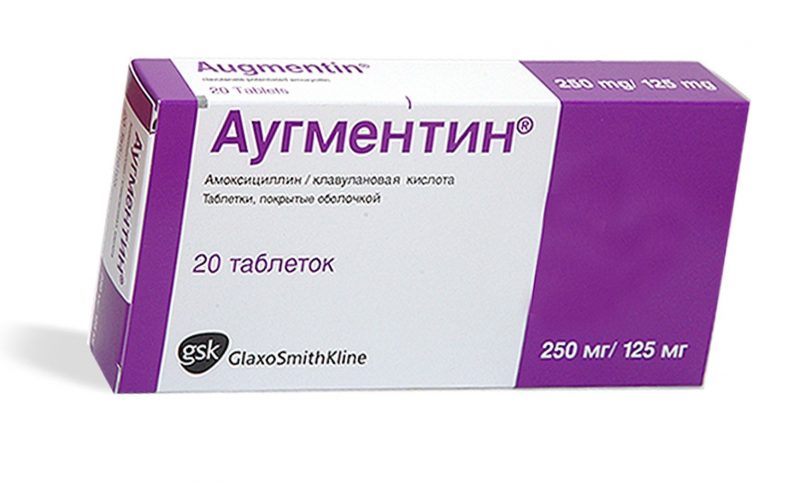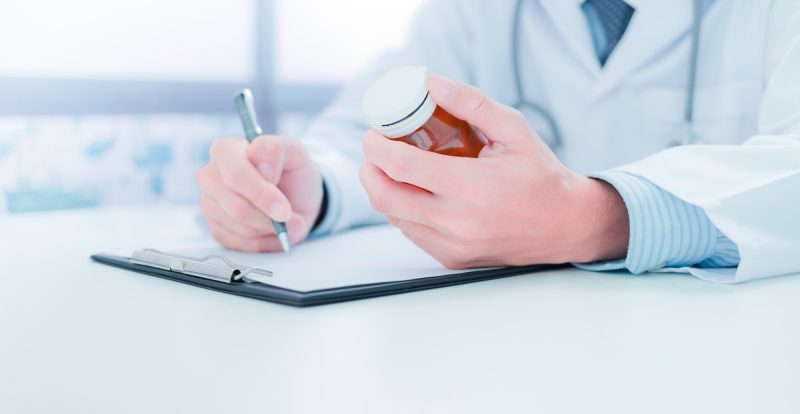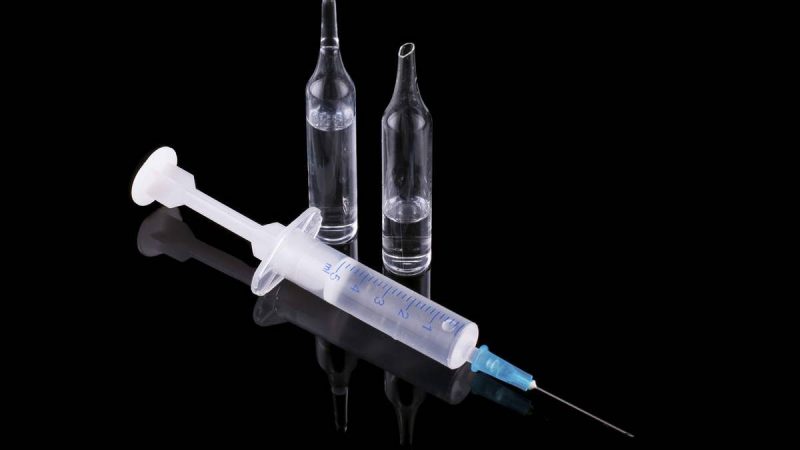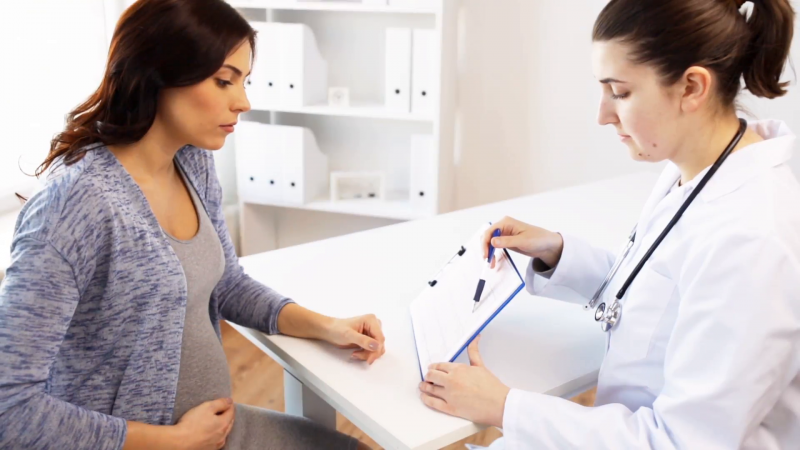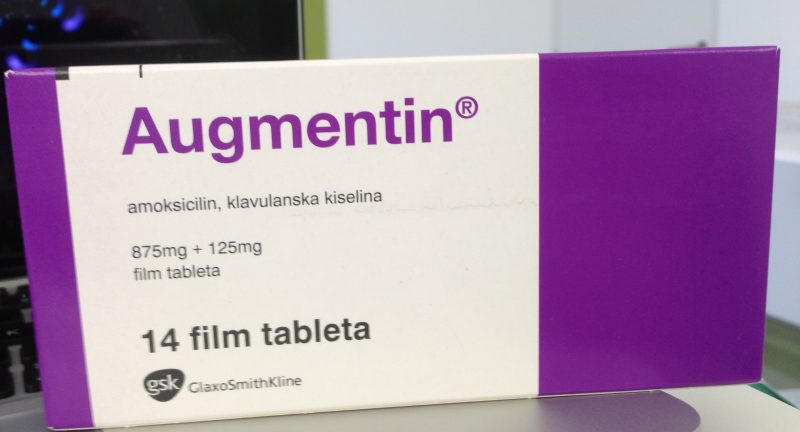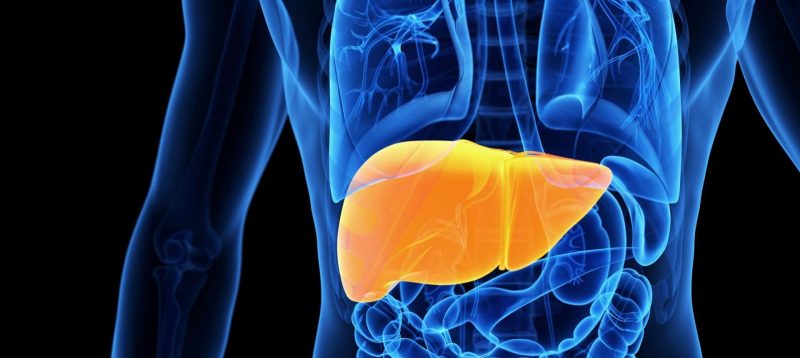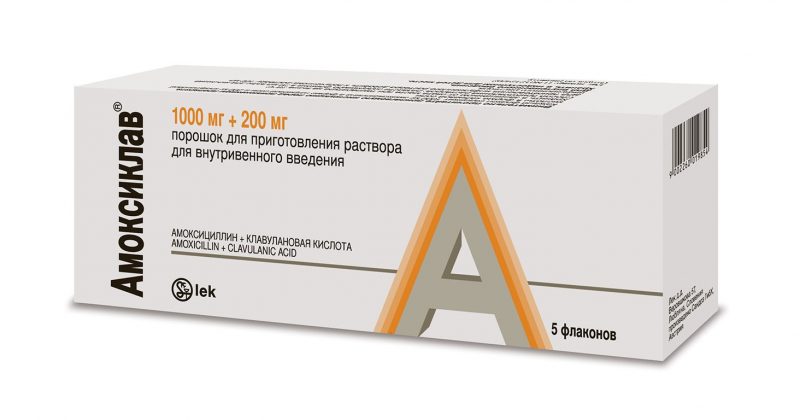The widespread use of antiseptics has led to the emergence of aggressive strains of bacteria. The constant increase in resistance of pathogens to antibiotics is a worldwide problem. In search of a solution, scientists are discovering new combinations of drugs that can overcome emerging barriers. One of the results of such studies was the antibiotic Augmentin. Since its invention, in service with doctors, another effective drug has appeared that helps fight penicillin-resistant strains.
Material Content:
- 1 Composition and release forms
- 2 Pharmacological properties and pharmacokinetics
- 3 Why appoint Augmentin
- 4 Instructions for use and dosage for children and adults
- 5 During pregnancy and lactation
- 6 Drug interaction
- 7 Augmentin Alcohol Compatibility
- 8 Contraindications, side effects and overdose
- 9 Antibiotic Analogs
Composition and form of release
The action of the drug is based on the work of two components: the semi-synthetic compound amoxicillin and clavulanic acid. Both of these substances have antimicrobial activity. The key is the effect of amoxicillin. Clavulanic acid also has a devastating effect on bacteria, but its main function is to protect the antibiotic from compounds that produce microorganisms.
This drug has many pharmacological forms in which the active substances are found in various proportions. In addition to these compounds, additional components are included in the medicine.
- One of the forms of Augmentin is a broad-spectrum tablet with a prolonged effect. They are found in a dosage of 1000 / 62.2 mg. The designation in the first place always indicates the content of the antibiotic. Of the other components, the composition of the preparation contains modified starch and cellulose, as well as some salts of silicon and magnesium.
- There is another oral form - these are regular tablets. There are also several types of dosages: 250, 500 and 875 mg in combination with 125 mg of clavulanic acid. In this form of the drug, only the quantitative content of the antibiotic changes, while the percentage of the other active substance remains constant. From which it follows that these tablets are not interchangeable. You need to buy exactly the dosage that the doctor indicates. Among other substances in the composition of this form is cellulose and starch. There are compounds of silicon, magnesium and titanium. The film coating coating the tablets consists of several types of macrogol and silicone oil.
- Among all the dosage forms of the drug, there is also the most convenient for small patients - this is the powder from which the suspension is prepared (Augmentin antibiotic for children). In the composition of such a powder there are several flavorings and aromatic additives at once. The tool is prepared just before the start of the course. It is conveniently dosed with a measuring spoon, which is immediately found in the package. For an example of a suspension, a dosage means the content of active substances in every 5 ml of the finished product. Three types of powder are available: 400/57 mg; 200 / 28.5 mg; 125 / 31.25 mg. Separately, it is worth mentioning the Augmentin EU powder with an active ingredient content of 600 and 42.9 mg.
- For treatment in a hospital, intravenous injections or infusions are prescribed. The solution for medical manipulations is prepared from a powder having a single dosage of 1000 + 200 mg. There are no additives in this form of the drug.
All medicines called Augmentin are prescription drugs and should not be dispensed without a doctor’s prescription.
Pharmacological properties and pharmacokinetics
Augmentin destroys bacteria sensitive to the components of the drug. Initially, the bactericidal property was attributed only to amoxicillin. This antibiotic is similar in structure and action to natural penicillins. However, it is distinguished from natural compounds by the presence of a hydroxyl group, which appears in amoxicillin during chemical conversion.
Due to this transformation, the substance acquires acid resistance and high bioavailability, therefore it is actively used in the form of oral forms. As follows from the description, the medicine is well absorbed through the stomach and is not destroyed by the action of its acidic environment.
Modification of the antibiotic also allowed to expand its antibacterial spectrum. The substance is active against staphylococci, streptococci, klebsiella, salmonella, shigella and neiseria, among which there are species resistant to penicillin.
How does an antiseptic work? It prevents the formation of peptidoglycan - one of the components of the microbial cell wall. Without peptidoglycan, a bacterium cannot maintain its own structure and self-destructs.
The antibiotic is almost completely (more than 90%) absorbed by the body, provided that it is administered through the digestive tract. It begins to act in 15-30 minutes and remains active for 8 hours.
It has an extensive coverage area. It is found in plasma, urine, bronchial secretion, in tissues and lung secretions, in the intestinal membranes, genitals of women and men, in inflammatory exudate, in bile, in bone and adipose tissue, in the fluid secreted by the middle ear. It penetrates poorly through the physiological barrier that exists at the border with the shells of the brain. Up to a third of the total concentration is found in the tissues of the fetus of a pregnant woman.
The amount of antibiotic administered is half lost after an hour and a half. The bulk of the chemical compound is filtered by the kidneys (50-70%). Up to 20% of the substance is excreted in the bile.
A major drawback of amoxicillin is that it is unstable to β-lactamases, enzymes synthesized by many pathogenic bacteria. To protect the antibiotic from the harmful effects of these compounds, they began to combine it with clavulanic acid.
This substance in its structure is very similar to penicillin antibiotics. However, its dignity lies elsewhere. It has high compatibility with bacterial enzymes that break down antibiotics, and forms a stable complex with them, thereby inactivating them. In essence, clavulanic acid is a beta-lactamase inhibitor.
By adding clavulanic acid to the medicine, its spectrum of action expands. In addition to bacteria that are sensitive to amoxicillin, a complex of two compounds is now able to destroy: clostridia, gardnerella, listeria, intestinal and hemophilic bacilli, including some penicillin-resistant strains.
Subsequently, it became clear that clavulanic acid itself can inhibit bacteria. Atypical microorganisms such as chlamydia are susceptible to its destructive influence. It is known that the substance is highly active against gonococci, bacteroids, moraxella, staphylococci, streptococci and legionella.
Among other things, clavulanic acid stimulates the immune system. Under the influence of this substance, the properties of the membrane of leukocytes change, because of which they become chemically more active. Due to the described process, the response to the invasion of infection is stronger.
Thus, the drug has a bacteriostatic and bactericidal effect, and also along the way enhances antimicrobial immunity.
Why appoint Augmentin
Augmentin treats bacterial infections that have arisen as a result of infection with microorganisms that are sensitive separately to amoxicillin, and a combination of amoxicillin with clavulanic acid.
The disease can be localized in various systems and organs:
- In ENT organs: protracted sinusitis, otitis media, tonsillitis.
- With damage to the lower respiratory tract: pleurisy, bronchitis in the acute and chronic stages, pneumonia, lung abscesses.
- In the genitourinary system: pyelonephritis, urethritis, cystitis, cervicitis, salpingitis, endometritis, vaginitis, gonorrhea.
- In the biliary tract: cholangitis, cholecystitis.
- In the digestive tract: salmonellosis (including carriage), dysentery.
- On the skin and in soft tissues: dermatitis with the addition of a bacterial infection, abscesses, phlegmon.
- In bone tissue and joints: osteomyelitis.
The drug treats mixed postoperative infections. It is administered with sepsis and peritonitis. Augmentin carry out prophylaxis before surgical procedures on the stomach, heart, liver, kidneys and biliary tract.
Instructions for use and dosage for children and adults
The conditions for the use of the drug depend on its pharmacological form, weight and age of the patient, the type of pathogen and the nature of the course of the disease. Before treatment, the doctor conducts a survey. If the patient has problems with the kidneys, the dose can be adjusted.
Augmentin tablets 250, 500, 875 mg
The presence of food in the stomach does not affect the degree of bioavailability of the drug, so it is better to drink it at the very beginning of a meal. Thus, it is possible to reduce the likelihood of negative effects from the gastrointestinal tract.
For children weighing 40 kg and over twelve years of age, as well as adults, a single dosage is established. In mild cases, 0.25 g tablets are prescribed, which the patient needs to drink three times a day.
With a moderate severity of the disease, Augmentin 500 mg is indicated, exactly one at a time and with the same frequency.In chronic and recurrent diseases of moderate severity, the highest dose is prescribed - 850 mg. It is used only twice a day, one at a time.
For children whose mass has not reached 40 kg, the required amount of active substance is calculated individually. To find out how much drug is needed, you need to multiply the body weight of the child by 40-45 mg. The result is divided into 2-3 doses.
Powder for oral suspension
To date, Augmentin suspension is the most commonly prescribed medicine for children from sore throat.
It is also resorted to in the treatment of sinusitis. Regarding the time of taking the suspension, the recommendations are the same as for other forms. The medicine gives fewer side effects if it is used with food.
Children calculate the norm depending on age and weight. The severity of the disease is also taken into account. A minimum dosage suspension of 125 mg is taken three times a day. Augmentin 200 mg and 400 mg are indicated to drink twice a day. The average single dose is 25-45 mg per kilogram of the weight of the child, which, depending on the mass, will be contained in 2.5-20 ml of the suspension.
Powder for solution for injection
The solution is prepared on the basis of water for injection, saline or other compatible liquids. Injections can be pricked from birth. The drug is injected into a vein either jet, but very slowly, or drip. The finished solution is not intended for intramuscular injections.
For adult patients, an entire ampoule is placed every eight hours. With a complex course of the disease, the interval between doses is reduced to 4-6 hours. When performing surgical procedures to prevent the development of an infectious process, 1 to 4 doses are administered per day, depending on the duration of such procedures.
Droppers are not given to infants. They inject the drug jet. The dose is calculated based on the body weight of the child. Children under twelve years of age are shown 25 mg of antibiotic per kilogram of weight. If the weight does not reach 4 kg, the dose is administered twice a day. With a larger mass, but up to forty kilograms - three times a day. Those whose mass exceeded the upper threshold (40 kg) are shown 3-4 doses throughout the day. If, by age, the child has become older than twelve years, then he needs an adult norm.
With any method of treatment for all categories of patients, the maximum duration of the course should not exceed two weeks.
During pregnancy and lactation
There are no definitive recommendations not to use Augmentin during pregnancy and lactation. However, you need to use it carefully. The decision on the need for such therapy is made jointly with the attending physician.
In practice, it was found that in most cases, the drug does not cause mutations or abnormalities in the development of the fetus. However, some infants born to mothers treated with an antibiotic experience serious bowel damage.
The situation is milder with feeding. Only traces of the drug, which in general do not exert an effect on the baby, get into a woman’s milk. But if the child begins to have problems with the intestines or in the mouth he has lesions characteristic of a fungal infection, feeding should be stopped.
Drug interaction
The medicine actively interacts with many pharmacy products. In the presence of aminoglycosides, antacids and laxatives, the dynamics of absorption and tissue distribution decreases. However, under the influence of vitamin C, indicators, on the contrary, increase.
Medicines that also kill bacteria, like Augmentin, enhance its effect. And those that only inhibit the growth of microorganisms do not allow the antibiotic to fully show its strength.
Augmentin is able to level or enhance the effect of other drugs. It is known that it suppresses the intestinal flora, and as a result reduces the absorption of vitamin K. Thus, it indirectly enhances the effect of blood thinners.With hormonal agents that prevent pregnancy, the opposite effect is obtained. Their reception is not so effective.
Diuretics will inhibit kidney antibiotic filtration. And drugs that regulate the level of uric acid in the blood will contribute to the appearance of a rash.
Augmentin Alcohol Compatibility
In medical practice, cases of acute intoxication of the body were recorded when drinking alcohol during treatment with Augmentin. It is impossible to predict the likelihood of a favorable outcome, so alcohol should be banned for the entire course of therapy and for several days after completion of treatment.
Contraindications, side effects and overdose
Contraindications are hypersensitivity reactions to penicillin drugs in the past or present, as well as an allergy to other components of any pharmacological form.
Poor liver and kidney function is not an obstacle to prescribing the drug. However, in such a situation, it is necessary to monitor the course of therapy in the laboratory.
The drug has an extensive list of side effects.
Less often than in one case out of a hundred, changes in the state of microflora lead to skin candidiasis and fungal infections of the mucous membranes. With the same frequency, cases of digestive disorders are recorded.
Reversible disorders in the hematopoietic system, malfunctioning of the lymphatic system, local reactions to an injection in the form of thrombophlebitis, skin rash and dermatitis are much less common.
Severe effects of therapy are recorded with a frequency of less than one in 10 thousand cases. Moreover, the toxic effect of the drug may occur after its withdrawal within a few days.
Among the diseases and syndromes that Augmentin can cause:
- hepatitis and other liver dysfunctions up to death;
- malignant exudative erythema and some acute skin diseases of an allergic type, accompanied by painful rashes, necrosis and intoxication;
- inflammatory kidney disease.
Before starting the course, you need to carefully study the dosage information, since exceeding the established norms leads to dyspeptic disorders, an imbalance in the balance of electrolytes and, in severe cases, to kidney failure. The forced restoration of the water-salt balance, the intake of sorbents helps to cope with the symptoms. Effective is the purification of blood through an "artificial kidney" apparatus.
Antibiotic Analogs
Complete analogues of the drug in question are medicines containing amoxicillin and clavulanic acid:
- "Amoxiclav" - an intravenous drug, tablets and suspension;
- "Novaklav" in the form of a dry lyophilisate (a substance dried by freezing and vacuum) for the preparation of injections;
- "Panklav" - in the form of tablets;
- Flemoklav Solutab is available in the form of oral soluble tablets.
All of these funds are accepted by analogy with Augmentin.
The appearance of a combination of amoxicillin with clavulanic acid made it possible to treat infections previously not subject to medicine. However, microorganisms are constantly adapting to new drugs, which requires doctors and patients to carefully handle antibacterial drugs.


